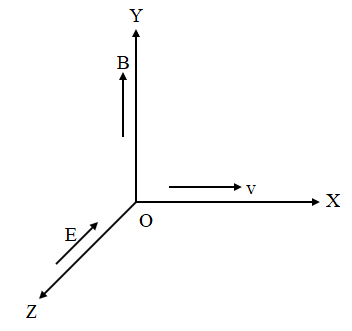Question
Question: A particle of charge \[ - 16 \times {10^{ - 18}}\,C\] moving with velocity 10 m/s along the X-axis e...
A particle of charge −16×10−18C moving with velocity 10 m/s along the X-axis enters region where a magnetic field of induction B is along Y-axis and field of magnitude 104V/m is along negative Z-axis. If the charged particle continuous moving along the X-axis, the magnitude of B is:

A. 106Wb/m2
B. 105Wb/m2
C. 103Wb/m2
D. 107Wb/m2
Solution
The particle continues to move along the X-axis implies that there is no net force along Z-axis and Y-axis. In that case, the electric force equals the magnetic force on the particle.
Formula used:
Fe=qE
Here, q is the charge of the particle.
FB=qvB
Here, v is the velocity of the particle.
Complete step by step answer:
We know that the electric force acting on the charged particle placed in the uniform electric field E is,
Fe=qE
Here, q is the charge of the particle.
Also, the magnetic force on the particle placed in the magnetic field B is,
FB=qvB
Here, v is the velocity of the particle.
Since the particle continues to move along the X-axis, the electric force along the negative Z-axis is equal to the magnetic force on the particle along the Y-axis. The net force on the particle is zero except along the X-axis.
Therefore, we can write,
qE=qvB
⇒B=vE
Substitute 104V/m for E and 10 m/s for v in the above equation.
B=10104
⇒B=103Wb/m2
So, the correct answer is “Option C”.
Note:
If the electric force along the negative Z-axis does not equal the magnetic force along the Y-axis, the particle could have moved along the direction whichever the force has maximum value. The unit of magnetic field is Tesla or Wb/m2, therefore, if the magnetic field is given in Tesla, we don’t need to convert it into S.I. unit.
